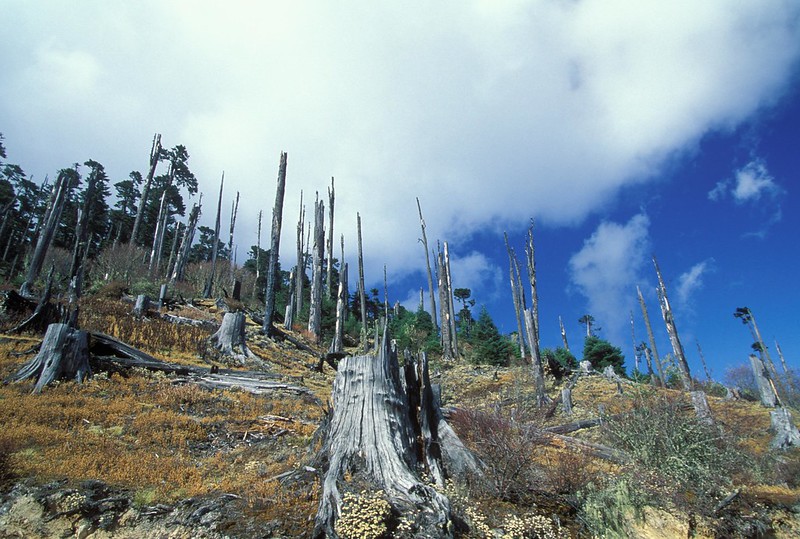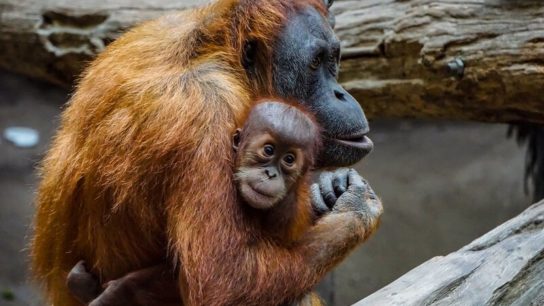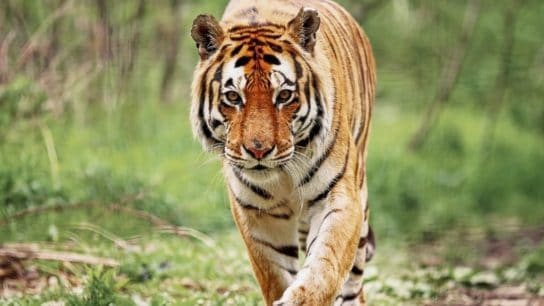According to a new study, just 3% of the world’s ecosystems remains ecological intact with healthy populations of all its original animals and undisturbed habitat.
—
What is Happening?
- The study, published in the journal Frontiers in Forests and Global Change, looked at maps of the ranges of 7 000 species in 1500 and today from the International Union for Conservation of Nature’s Red List. Most of the data was for mammals, but it also included some birds, fish, plants, reptiles and amphibians.
- Many of the intact areas were identified in Indigenous- managed territories, but the study did not include Antarctica.
- These intact areas of land are mainly in parts of the Amazon and Congo rainforests, east Siberian and northern Canadian forests and tundra and the Sahara. In Australia, the study found no intact areas left, with invasive alien species like cats, foxes, rabbits, goats and camels having had a major impact on native species.
- The new assessment combines maps of human damage to habitat with maps showing where animals have disappeared from their original ranges or are too few in number to maintain a healthy ecosystem.
- Previous analyses have identified wilderness areas based largely on satellite images and estimated that 20-40% of the Earth’s surface is little affected by humans. However, this new study argues that forests, savanna and tundra can appear intact from above but that, on the ground, vital species are missing. For example, elephants spread seeds and create important clearings in forests, while wolves control populations of deer and elk.
You might also like: Sixth Mass Extinction of Wildlife Accelerating- Study
Dr Andrew Plumptre, the lead author of the study, from the Key Biodiversity Areas Secretariat in Cambridge, UK, says, “Much of what we consider as intact habitat is missing species that have been hunted [and poached] by people, or lost because of invasive species or disease. It’s fairly scary, because it shows how unique places like the Serengeti are, which actually have functioning and fully intact ecosystems.”
“We’re in the UN decade of ecosystem restoration now, but it is focusing on degraded habitat,” he said. “Let’s also think about restoring species so that we can try and build up these areas where we’ve got ecologically intact ecosystems,” he continues.
- The researchers suggest reintroducing a small number of important species to some damaged areas, which they say could restore up to 20% of the world’s land. Plumptre cites the successful reintroduction of wolves into Yellowstone national park in the US, which transformed the ecosystem.
- However, some scientists say that the new study underestimates the intact areas, because the ranges of animals centuries ago aren’t well known and the new maps do not take into account the impacts of the climate crisis, which is changing the ranges of species. Plumptre acknowledges that the species range maps were relatively crude and said the 3% figure was a “ballpark estimate,” adding that, “the trouble is, at the moment, we don’t have any other maps.” He says that scientists should next focus on specific regions and use more detailed human impact data and species data to identify ecologically intact sites.
Featured image by: Flickr

















